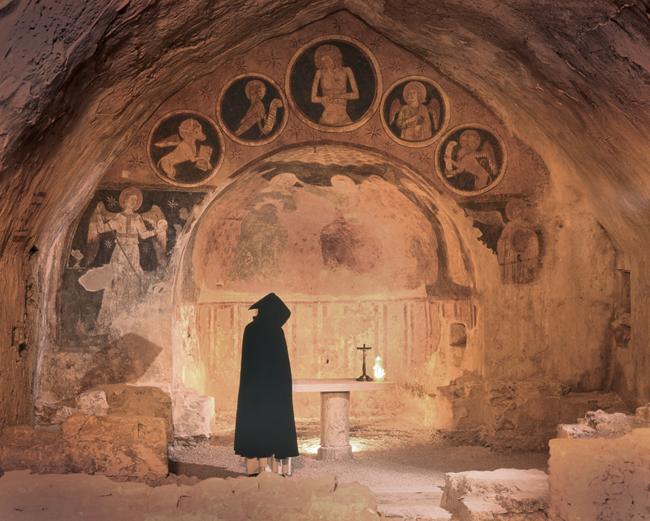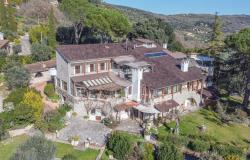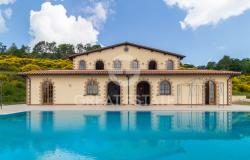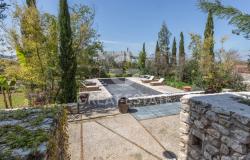“There’s a treasure behind that passage,” the old man said to the group of six young speleologists who had just climbed down a wall and had ended up into his vegetable garden. The young men were out on a speleology drill in a run-down area of Narni, a fascinating little town in Umbria, whose story goes back a very long time, to as early as 600 BC when it was settled by the Umbrian, which called it Nequinum.
Following the old man’s suggestion to inspect what was beyond the opening they had unexpectedly come across, the speleologists entered to find two eyes staring at them.
The eyes belonged to a fresco of the Virgin Mary. The young men had just discovered the remains of a church dating to the 12-13th century, part of a larger complex, the monastery of San Domenico, one of the biggest in Umbria. That discovery took place in 1979. Over the years, the six friends would uncover a number of tunnels, and, with them, a story of tortures perpetrated by the Catholic Church - the Inquisition had taken place here for at least two centuries. And nobody knew anything about it until the young speleologists started digging.
One of those speleologists is Roberto Nini, who has devoted the last 30 years of his life to bringing to light the secrets preserved under Narni. The president of “Narni Sotterranea”, Nini now leads visitors on a fascinating subterranean journey to let you in on the stories guarded here.
The visit begins inside the church first discovered by the speleologists, which has preserved some of the most ancient frescoes from Narni, including the Incoronazione di Maria and San Michele Arcangelo, to whom the building was most likely consecrated. The room has been set up to show visitors another aspect of Narni’s long history, the one related to the Romans, who conquered Nequinum in the 4th century BC, later changed its name to Narnia and made it one of the most powerful municipalities of the time thanks to its strategic position on a rocky hill overlooking the Via Flaminia, the road that connected Rome to the Adriatic Sea. In the 1st century BC, the Romans built a 13-kilometer long aqueduct, which provided water to the city. Special effects allow you to virtually enter the aqueduct, which began on a hill nearby and brought water right into the heart of Narnia.
 Proceeding down a narrow hall, the tour continues into “la stanza dei tormenti”, the “agonies’ room”, so-called because it is where those suspected of heresy, witchcraft and those who simply challenged the authority of the Church were tortured with the most unimaginable wicked instruments. The Inquisition, the same institution that persecuted people like Giordano Bruno and Galileo Galilei, had one of its tribunals down here. The torture instruments you see today have been reconstructed based on documents found at the Vatican Archives and at Trinity College in Dublin. One document has revealed that a process against a bigamist took place here in 1726.
Proceeding down a narrow hall, the tour continues into “la stanza dei tormenti”, the “agonies’ room”, so-called because it is where those suspected of heresy, witchcraft and those who simply challenged the authority of the Church were tortured with the most unimaginable wicked instruments. The Inquisition, the same institution that persecuted people like Giordano Bruno and Galileo Galilei, had one of its tribunals down here. The torture instruments you see today have been reconstructed based on documents found at the Vatican Archives and at Trinity College in Dublin. One document has revealed that a process against a bigamist took place here in 1726.
Those who escaped torture were imprisoned in the cell next to the agonies’ room, which makes for the most intriguing part of the visit. The walls are in fact covered with mysterious writings and drawings, and it took Nini years, as well as several trips to the Vatican archives, to decipher them and discover the story behind them.
What are these mysterious graffiti? They are Masonry symbols. They were engraved on the walls by a prisoner named Giuseppe Andrea Lombardini. He was the captain of the Inquisition guards; disturbed by the methods and tortures carried out by the Inquisition, he became interested in Masonic rituals and ended up being convicted as heretic. He was imprisoned here in 1759. Every symbol he drew, he did it in a way that only those who knew how to read them would understand them. “Nothing is what it seems and nothing was done by chance,” says Nini. Lombardini drew many references to the atrocities of the Roman Inquisition and to his desire to flee. But because his body could not escape, he tried to escape with his spirit. Lombardini was eventually pardoned by the Pope, but forced to perpetual exile and all traces of him were lost after his liberation.

The visit ends inside the former Cathedral of San Domenico, where the latest discovery has revealed a Byzantine mosaic dating to the 6th century.
Everything that has been discovered and restored under Narni has been done thanks to the work of volunteers who, through the years, have freed the area of debris and rubble and have spent time researching archives and old documents. The work is ongoing and, like many great mysteries, there’s still much left to decipher. What began as a game by a group of young friends has revealed an important piece of Italian history.
“I’m not sure why you’d want to go underground since you’ll have to spend so much time there when you're dead,” the old man had said to the young speleologists after they explained what they were doing in his orto. To which they responded, “We’re going underground because there’s a whole world to discover down there.” And right they were.
For information about guided tours of Narni Underground - Narni Sotterranea, click here.
Photos courtesy of Narni Sotterranea.













